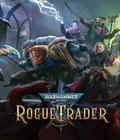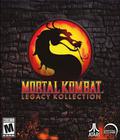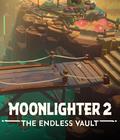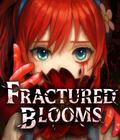Bounty Star: The Morose Tale of Graveyard Clem follows the story of the titular Graveyard Clem, who's an ex-soldier-turned-robot-riding guardian of a small town in a postapocalyptic western land. The town is invaded by ne'er-do-wells, and while Clem can drive them away, the bandits respond by leveling the town with missiles. Left alone to bury the dead — hence her sobriquet — Clem is a broken and shattered person. She gets a new lease on life when a friend offers her a chance: A battered farm, a leftover Raptor Mk.II combat robot, and putting her skills to use as a bounty hunter. Given the choice between that and starving, Clem begins her life anew. Of course, being a bounty hunter means there's a darn good chance that the bad guys who dragged her down the first time might show up again ....
Bounty Star's story is a standard western-themed tale of revenge and redemption, told through the lens of giant robots instead of six shooters. It doesn't break any molds, but it does a good job of telling its story, frequently veering between drama and humor in a charming way. Clem is a likable character but a total garbage fire of a human being who is self-aware enough about her flaws and works on them. I found myself rooting for her pretty early on. I think the story might be the strongest part of the entire experience, and I looked forward to each new cut scene.
The bulk of your time in the game is spent bounty hunting. You pick a mission from a bounty board, eat a good meal to power up, and go smashing. The basic robot controls are straightforward. You have a melee attack, a ranged attack, and multiple customization slots to equip various options, such as a shield, the ability to jump, firework launchers to scare away random dinosaurs, and healing charges to keep your mech functioning.
Combat tends to be about swapping between melee and ranged weaponry as needed. Melee weapons are strong but require you to get close to foes, while ranged weapons are safer but require reloading every so often. Early on in the game, you unlock Melee Tricks and Gun Cancelling. Melee Tricks lets you add a passive bonus to your melee attacks if you time your button presses instead of mashing them, while Gun Cancelling allows you to do a special attack out of melee which depends on the gun you have equipped. This not only does a cool attack but also instantly reloads your gun.
Weaponry is varied in the game. Melee weapons range from a good ol' fashioned baseball bat to an arm-mounted flamethrower. Ranged weapons can be shotguns, laser beams, grenade launchers, machine guns, and more. You can equip multiple loadouts and swap between them mid-fight, so you don't necessarily have to equip a healing or dodge option, but I found it was often helpful to assure everything can dodge.
It turns out that piloting a giant robot in the middle of the scorching desert isn't easy, and that is where temperature comes into play. Your mech has a temperature gauge that rises or falls as you use weapons and actions. Some weapons, such as machine guns or flamethrowers, will raise the temperature while others, like a shotgun with a built-in cooling system or a freeze ray, will lower it. Even your various dodge options can raise or lower the temperature. If your temperature rises too high or drops too low, you begin to suffer negative effects. If it fills up entirely, your machine temporarily shuts down. To add to that, the time of day also impacts your battle abilities. Temperature rises easier in the afternoon sun and drops easier in the cold evening.
This has a significant impact on your ability to build your unit. You can try to mix and match cool and hot abilities to create a natural flow between the two, or you can go all-in on one kind of temperature and balance it with having a quick way to cool or heat your unit. Once you unlock multiple loadouts, you can even keep one of each on hand and swap between the two, allowing you to have a high-heat and low-heat build and adjust on the fly.
On the one hand, this is a cool idea and encourages players to think about their units, but on the other hand, it quickly grew tedious. Early on, you unlock dodges that rapidly raise or lower your temperature, so the most effective method of heat management is to choose high-spec weapons and rapidly dodge if you overdo it. Tying every action to raising or lower heat sounds interesting, but the result is that I found the quickest way to raise/lower heat and stopped thinking about it.
There's also a rock-paper-scissors mechanic when it comes to weapons. Every weapon has either Blade, Bludgeon or Boom damage, and enemies are either strong or weak against that type of damage. If you're going to face a lot of Scaled enemies, you'll want to bring Bludgeon weapons, while Plated enemies are most vulnerable to Boom weapons. On the other hand, Skin enemies resist Boom damage, so they will take significantly reduced damage.
I didn't think too much about the rock-paper-scissors mechanic. Aside from making sure that my weapons didn't share the same damage type, it rarely felt worth it to try to specialize. The weapon balance isn't great, and strong weapons that are neutral were almost always far better than less powerful weapons that matched types. The shotgun, which is the first weapon you unlock in the game, would often kill enemies far more effectively than something they were theoretically "strong" against.
The combat feels very stiff. Despite the game deeply encouraging mixing abilities, it felt awkward to swap abilities mid-combo. Even when you unlock gun canceling, it never feels particularly natural. In the case of certain weapons, it made things worse, since the unique attacks for the grenade launcher felt more dangerous than natural. Using secondary abilities like shields in combat never feels natural, and I gravitated away from them because there would be multiple seconds of lag between being mid-combo and trying to block an attack.
To Bounty Star's credit, it tries to keep things fresh with optional objectives. These can range from demanding you never max out your temperature gauge to using a very specific loadout for the stage. Finishing the stage while completing that objective yields some bonus cash to spend. These objectives remain completed even if you go back into the stage later, so you don't have to do them all in one go. It's frequently not worth trying to hit them all at once because they can sometimes have contradictory requirements, such as finishing a stage quickly but also requiring a specific loadout.
The core problem I had with the optional objectives is that they were rarely worth the trouble. They helped make the combat feel more engaging to challenge myself, but the rewards didn't feel necessary or helpful. Since money is so easy to get in the game, restarting a stage to get a pittance genuinely didn't feel worth the trouble. It's a neat concept, and I really like the attempt to make things feel more exciting, but it seems to assume a more intense game than Bounty Star ends up being.
This brings me to the farming segment. Between stages, you're allowed to return to your home base. Using the money that you earn from bounty hunting, you can start your own homestead. This begins simply enough, with you being able to cook stat-raising meals before each mission, but it rapidly unlocks additional new features, including growing crops, crafting ammo, raising chickens, feeding a flying mantis monster, shooting down delivery drones to steal their (ill-gotten) loot, and more. The further you upgrade, the more bonuses you can add to your character, reducing the cost of deploying to missions, making it easier to go into missions with bonus stats, or making friends to drag Clem out of her morose mindset.
The core problem I have with farming is that it's very basic. A good chunk of it is functionally automatic once you buy a specific upgrade, and your interaction with it is just grabbing water or food and deploying it to the slots required. It gets more complex as things go on, but at the same time, it feels perfunctory. It fits the themes of the story, but it also feels like busywork between the actual combat segments. There were chunks of the story during which I didn't bother growing plants or keeping chickens because it felt pointless.
While the game tries to make the various mechanics play into one another, I can't help but feel that Bounty Star would've felt better as a more intense game. Having to grow your own ammo and provide your own fuel to take on the big high-end boundaries feels like it would flow better than taking on bounties but getting a discount on your costs. It's still a fun gameplay loop, and it gets more involved later on, but there were sections when I got bored with the gameplay and wished I could see the next part of Clem's story without the gameplay.
Bounty Star clearly is on a low budget, but it uses it well. The character models aren't the greatest, but they have a cartoony art style that works well with the story. The mech combat is beautiful, fast and fluid, and I frequently enjoying watching my Raptor in action. Enemies are varied and colorful, and there are some incredibly pretty environments, especially at night, when the various flora of the world illuminates in a glittering purple aura. The voice acting is the star of the show, with Renée Faia's Clem absolutely stealing the show, lending a much-needed combination of steel and humanity to the lead character. The music trends too much to generic western tunes for my taste, but it does its job and does it well, so I can't complain.
Bounty Star: The Morose Tale of Graveyard Clem is a fun game that never manages to make all of its mechanics blend together well. There are a lot of strong ideas that I really like independent of each other, but it never feels like a cohesive whole. There's still a lot of fun to be had in blasting bandits and helping Clem go from the graveyard to the farmyard, but it's very much a game with big ideas that it doesn't always live up to. If the concept sounds interesting, it's probably well worth a shot. Just be prepared for an experience that doesn't always hit the mark.
Score: 7.5/10
More articles about Bounty Star: The Morose Tale of Graveyard Clem











 Bounty Star is an over-the-shoulder 3D action game that marries mech combat and customization with farming and base building.
Bounty Star is an over-the-shoulder 3D action game that marries mech combat and customization with farming and base building.








































